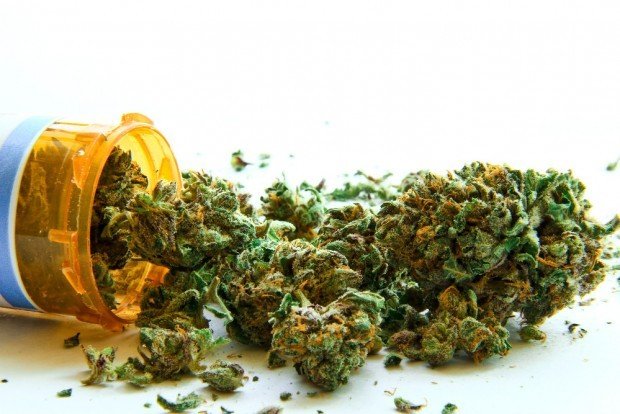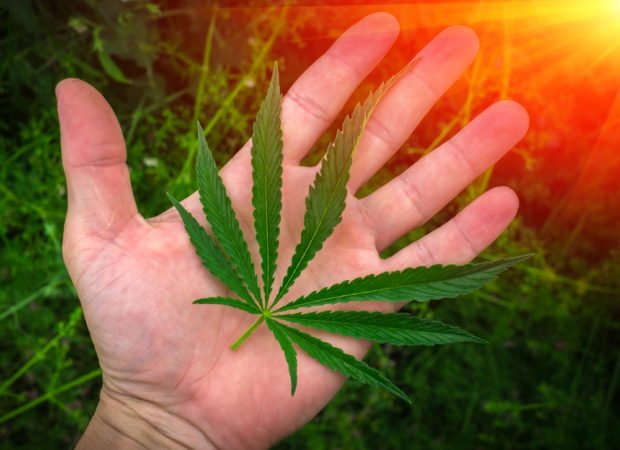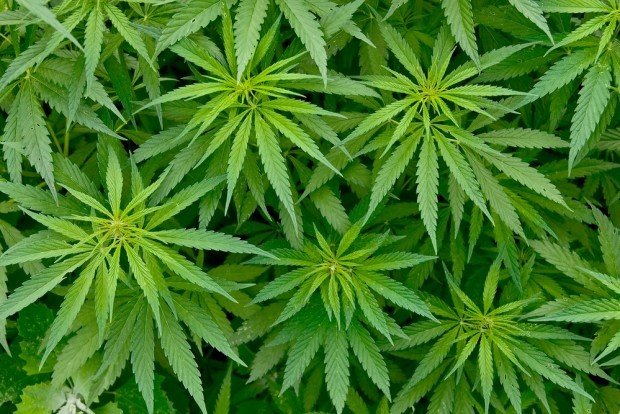The history of cannabis dates back as far as the third millennium BC, and probably way back, according to archeological evidence (1). As a result of its psychoactive properties, it was first used for religious purposes, and not much later, for recreationally.
The first historical writings come from China in the writings of Chinese Emperor Shen Nung. The plant was described as medicine with psychoactive agents. It was used as a remedy for treating rheumatic pain, gout, malaria, and insomnia. The plant later traveled to India and from there it got to North Africa until it reached Europe around 500 AD.
In the Islamic world, its use was restricted in the 14th century. This was done as a result of the psychoactive effects it had on people. In the modern world, the plant’s use was restricted before the beginning of the Second World War. According to reports, it allegedly caused “violent behavior”. The Netherlands became the first country to legalize the plant, followed by Uruguay in 2015 and Canada in 2018, which both legalized recreational cannabis. Portugal even completely decriminalized the use of marijuana.
What is cannabis and marijuana?
Cannabis (Cannabis Sativa) is a species of the Cannabaceae family of plants; however, most people know it as hemp, marijuana, grass, and many more names. The famous properties of the plant come from the presence of THC (delta-9 tetrahydrocannabinol) and CBD (cannabidiol). These are two of the many cannabinoids present in the cannabis plant that has been proven to react to our endocannabinoid system affecting your overall health. The first component, THC, is responsible for the “high” effect and has psychoactive properties, while the second and many other cannabinoids don’t have psychoactive properties, but still carry a lot of medical benefits.
When dried, the leaves and flowers of the plant are known as marijuana. They are used recreationally and can either be smoked, vaped, or even added to edibles. The resins extracted from the plant, leaves, and flowers are known as hashish, while the fibers in the plant are cultivated as industrial hemp, and can be used in the textile industry, and lately much more in the medicine industry.
Over time, the pharmaceutical industry soon began to extract specific components of the whole plant to produce specific cannabinoids. These include THC, CBD, CBN (cannabinol), CBG (cannabigerol), CBDL (Cannabidiol), and a combination of them, each with unique properties and specific uses as a remedy for different diseases and conditions.
Medical Benefits Of Cannabis 
The ratio of cannabinoids present in the plant depends on the strain of the cannabis plant (there is a huge choice of different strains). With the aforementioned factors in mind, cannabis can be used to treat a wide array of diseases and conditions. The plant contains over 100 compounds each of which is distinguished with specific properties and positive effects on health and well-being. The most popular cannabinoids mostly found in cannabis-based products are considered to be CBD and Delta 8 THC. For example, delta 8 is famous for its relaxing properties and help with medical conditions such as stress and anxiety, chronic pain, and digestive disorder. Thanks to numerous health benefits, CBD products keep gaining popularity and availability. Today in many online stores, like CBD2heal, Dr. Ganja online CBD shop, and physical shops as well, you can find a diversity of cannabis-based products. Down below are the 19 most studied medical conditions and how cannabis may serve to address the problem.
1. Arthritis
According to studies, cannabis can reportedly reduce pain and inflammation, and also help improve sleep. Moreover, all these factors help patients suffering from rheumatoid arthritis. According to one study, several hospitals gave their patients Sativex, a legal cannabis-based drug, and the results showed that after only two weeks the patients reported a significant reduction in pain and much better sleep, in comparison to placebo given patients.
2. Parkinson’s disease
A number of patients suffering from this condition in Israel are successfully reducing pain and tremor only by using cannabis. Physicians noted the improvement of fine motor skills in patients after taking cannabis, in any form (2).
3. Cancer
In 2007, researchers from the California Medical Center in San Francisco experimented with the effects of CBD over breast cancer patients and found that the cancer cells had been reduced, and there were less aggressive spreaders (3). A lot more research needs to be done, but so far, the results have been very promising, and not just with breast cancer, but also brain, lung, and pancreatic cancer too. There is a lot of anecdotal evidence of patients using cannabis to reduce the side-effects of chemo and radiotherapy, reducing nausea and sickness significantly.
4. Fibromyalgia
Scientists from the University Medical Center in Leiden, Netherlands, found a correlation between fibromyalgia and deficiencies in the endocannabinoid system, and a lot of patients have tried cannabis to relieve the symptoms of this condition, reducing muscle pain and spasms. The reason for this is because a deficiency in endocannabinoids is believed to cause muscle pain. Thus, by taking cannabis, the endocannabinoid system is stimulated to produce more endocannabinoids. This then reduces muscle pain, and in some cases may even be able to heal the condition.
5. Alzheimer’s prevention
A study from 2006 conducted at the Scripps Research Institute found that cannabis can prevent the progression of Alzheimer’s by slowing the formation of amyloid plaques simply by blocking the enzyme that creates them.
6. Neuropathic pain
Cannabis can relieve pain in a patient with neuropathic pain instantly. It does this by activating the CB1 and CB2 receptors in your endocannabinoid system. These receptors manage pain levels, and while THC reduces pain, CBD lowers inflammation and the combination of the two helps neuropathic pain patients instantly.
7. Epilepsy
THC present in cannabis controls epileptic seizures by binding the brain cells, controlling excitability and regulating relaxation. A 2017 study conducted on 120 children suffering Dravet’s Syndrome, a complex genetic mutation disorder where children have medication-resistant seizures and an unfortunate high death rate, showed that 40 % of the patients who took CBD halved the number of seizures, while 5% didn’t have any more seizures, compared to patients who took a placebo. All of the patients were on regular epilepsy medication at all times.
8. Multiple sclerosis
There is a lot of anecdotal and some studies conducted that found that cannabis can stop the neurological effects and muscle spasms occurring in multiple sclerosis patients (4). This is due to the THC present in cannabis, which relieves pain instantly and bonds receptors in the nerves.
9. Crohn’s disease
The condition causes inflammatory bowel disorders, causing pain, diarrhea, vomiting, weight loss and more. Cannabis reduces inflammation and helps with the symptoms. A study done in Israel showed that smoking cannabis eased the symptoms in 10 out of 11 patients, and completely reduced the symptoms in five of them.
10. Anxiety remedy
Cannabis may improve mood and in low doses acts as a mild sedative, thus reducing anxiety in patients. However, in larger doses anxiety patients might become paranoid at certain moments, increasing anxiety a lot.
11. Treat inflammatory bowel diseases
Similar to Crohn’s disease, cannabis helps reduce inflammation in a similar manner, and patients feel symptom reduction in several seconds.
 12. Sleep disorders
12. Sleep disorders
Components in the plant, like CBD and CBN – can help insomnia patients improve their sleep, especially reducing nightmares. This is because cannabis can interrupt the REM stage of sleep, and this is the stage where nightmares occur. However, interrupting the REM stage might cause some other sleep disorder, or not getting enough sleep.
13. Improve symptoms of Lupus
Some components of cannabis can improve your immune system. Since Lupus is a condition that causes your body to attack itself, it can help you deal better with Lupus. Cannabis also relieves pain and nausea, further reducing the symptoms of this disorder.
14. Post-Traumatic Stress Disorder (PSTD)
The endocannabinoid system produces components similar to THC that may help control fear and anxiety in your body.
15. ADHD
Attention Deficit Hyperactivity Disorder is suffered by a surprising 5% of children and 3.5% of adults (5). It is often manifested and followed by other symptoms as well, symptoms like anxiety, low self-esteem, frustration, chronic boredom, depression, substance abuse, problems at school or work. A German study from 2015 showed that of the 30 patients with ADHD, all 30 felt a reduction in symptoms like improved concentration and reduced impulsivity after taking medical cannabis.
16. Hepatitis C side-effect relief
Cannabis eases the side-effects of Hepatitis C treatment, which causes severe side-effects like fatigue, nausea, loss of appetite, and depression. In fact, many patients have stopped treatment simply because of the side-effects. A 2006 study published in the European Journal of Gastroenterology and Hepatology showed that 86 % of the patients smoking cannabis finished their whole treatment, contrary to only 28% who did not take cannabis at all.
17. Back pain
In states where medical cannabis is legal, people are successfully treating back pain. They’re also addressing other symptoms of chronic pain like nausea and vomiting. Cannabis helps reduce pain levels, helps you sleep better, rids you of all sorts of sedatives and painkillers, and improves your quality of life overall.
18. Childhood autism
Numerous studies conducted in Israel have found that cannabis is safe and effective in treating ASD (autistic spectrum disorder). The study was based on parents’ testimonies of treating their children with cannabis oil, and the results were good. They showed that 30% of patients experienced significant improvement, and 50 % of the patients were showing moderate improvements. Only 15% showed slight or no change at all.
19. Depression
The use of cannabis in treating depression is debatable. While some evidence shows that people can help manage depression, other studies show that cannabis can worsen the condition to a more severe level. So it’s important to consult an expert if you’re looking to try cannabis to manage your depression. This is because the THC and CBD ratio might be crucial in the course of your treatment.
How do I use it?
Today most patients either use extracted oil, made with a specific ratio of cannabinoids for a specific condition or disease. However, a large portion of patients are smoking it, and even more, vaping it. Some may even opt for topical cannabis products.

Depending on your condition, your doctor will probably give you a choice of different strains, or a mix to help you with your condition. States that have legalized the plant for medical purposes have special clinics where they will determine the right strain and way of taking it for your specific condition or disease.
Possible side-effects?
Throughout all studies and research, there have been reports of possible side-effects when consuming cannabis. They can range from low to severe, and almost all of them wear out in a couple of hours. The most-reported side-effects include nausea, dizziness, concentration problems, and possible paranoia. Other notable symptoms included an increased heart rate, and of course addiction (only in 9% of users). However, reports have shown that THC-based cannabis causes more side-effects than CBD-based cannabis.
Other things you should pay attention to are that the plant should not be taken while pregnant, especially smoking it, for many obvious reasons. Also, there are simply not enough studies on how safe it is for your baby. Researchers are also unsure of how it might affect your baby’s brain development. If you have a family history of mental disorders you should first talk to an expert. This is because there is evidence that cannabis can fasten the onset of schizophrenia. It may also interact with psychoactive medicines. And of course, don’t drive under the influence, don’t babysit, and don’t do anything that can harm others around you.
The bottom line
Again, be sure to consult your physician or doctor before you try medical cannabis. Unfortunately, some people may not be the proper candidates for this kind of therapy. Also, don’t use high THC concentrated cannabis before using heavy machinery, driving or engaging in any dangerous activity.




![women [longevity live]](https://longevitylive.com/wp-content/uploads/2020/01/photo-of-women-walking-down-the-street-1116984-100x100.jpg)










